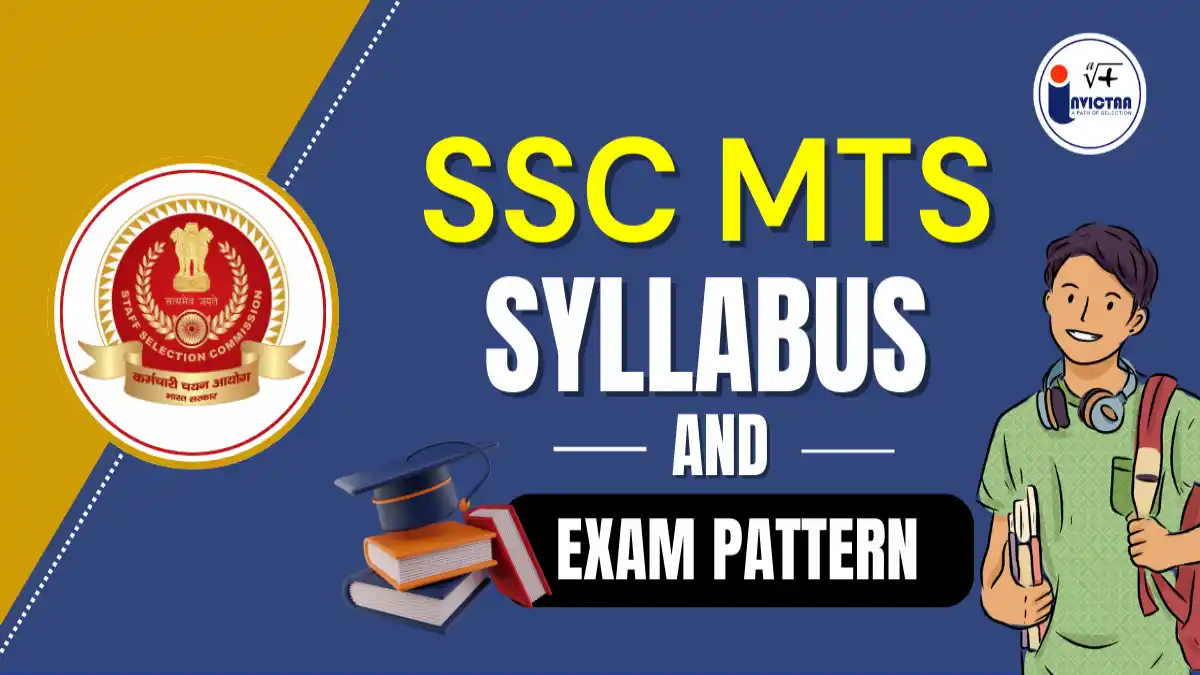The Staff Selection Commission - Multi-Tasking (Non-Technical) Staff (SSC MTS) is a highly sought-after examination for candidates seeking to secure a position in various central government ministries, departments, and offices. A comprehensive understanding of the syllabus and the current exam pattern is fundamental to formulating an effective preparation strategy and succeeding in this competitive exam.
This guide offers a detailed breakdown of the SSC MTS syllabus and the updated exam structure to streamline your preparation efforts.
🚀 Download Invictaa Plus App For A Structured Preparation 🚀
SSC MTS 2025: Exam Overview & Pattern
The selection process for SSC MTS consists of a Computer-Based Examination (CBE). For the post of Havaldar, candidates must also qualify the Physical Efficiency Test (PET) / Physical Standard Test (PST). The CBE is divided into two sessions, and it is mandatory to attempt both.
Computer-Based Examination (CBE) Pattern
| Session | Subject | No. of Questions | Maximum Marks | Duration |
|---|---|---|---|---|
| Session-I | Numerical and Mathematical Ability | 20 | 60 | 45 Minutes |
| Reasoning Ability and Problem-Solving | 20 | 60 | ||
| Session-II | General Awareness | 25 | 75 | 45 Minutes |
| English Language and Comprehension | 25 | 75 | ||
| Total | 90 | 270 | ||
Marking Scheme for CBE:
- Session-I: +3 marks for each correct answer. There is no negative marking in this session.
- Session-II: +3 marks for each correct answer. There is a negative marking of -1 mark for each incorrect answer.
- The exam will be conducted in English, Hindi, and 13 regional languages.
Physical Efficiency Test (PET) / Physical Standard Test (PST) (For Havaldar Post Only)
Candidates applying for the post of Havaldar in CBIC and CBN are required to undergo a physical test, which is qualifying in nature.
| Physical Efficiency Test (PET) | |
|---|---|
| Male | Walking: 1600 meters in 15 minutes. |
| Female | Walking: 1 km in 20 minutes. |
| Physical Standard Test (PST) | |
| Male | Height: 157.5 cm (relaxable for certain categories) Chest: 81 cm (fully expanded) with a minimum expansion of 5 cm. |
| Female | Height: 152 cm (relaxable for certain categories) Weight: 48 kg (relaxable for certain categories). |
SSC MTS Syllabus 2025: In-Depth Topic Breakdown
A thorough understanding of each topic is crucial for success in the SSC MTS exam. Below is a detailed, chapter-wise breakdown of the syllabus to guide your studies.
Detailed Topic-wise Syllabus
| Subject | In-Depth Topics & Chapters |
|---|---|
| Numerical and Mathematical Ability |
This section primarily tests basic arithmetic skills.
|
| Reasoning Ability and Problem-Solving |
This section evaluates general learning ability through questions on:
|
| General Awareness |
This section has a broad coverage, and questions are designed to test the candidate's general awareness of the environment around them. Key areas include:
|
| English Language & Comprehension |
This section tests the candidate's understanding of the basics of the English Language.
|
(Candidates are advised to download the official syllabus PDF for complete details.)
FAQs: SSC MTS Syllabus 2025
Q1: What is the selection process for SSC MTS?
Ans: The selection process for SSC MTS consists of a Computer-Based Examination. For the post of Havaldar, there is an additional Physical Efficiency Test (PET) / Physical Standard Test (PST).
Q2: Is there any negative marking in the SSC MTS exam?
Ans: There is no negative marking in Session-I of the Computer-Based Examination. However, in Session-II, there is a negative marking of 1 mark for each incorrect answer.
Q3: Are the marks from Session-I considered for the final merit list?
Ans: Session-I, which includes Numerical and Mathematical Ability and Reasoning Ability, is qualifying in nature. The final merit list is prepared based on the performance in Session-II (General Awareness and English Language & Comprehension). However, candidates must qualify in Session-I to have their Session-II papers evaluated.

